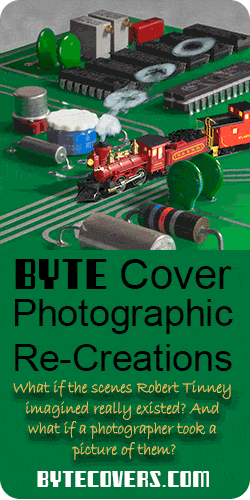 Scientists use spectroscopes to identify chemicals – even in stars billions of light years away. They also use spectroscopes to find planets orbiting other stars. With about an hour of effort, I was able to build my own and show my daughter how scientists do it.
Scientists use spectroscopes to identify chemicals – even in stars billions of light years away. They also use spectroscopes to find planets orbiting other stars. With about an hour of effort, I was able to build my own and show my daughter how scientists do it.

Make Magazine had the instructions for doing this, so I can’t take credit for that. You can buy a diffraction grating ($5 on eBay), a PVC pipe and elbow from the hardware store, and a rubber pipe cap, also from the hardware store. Add some cardboard and less than an hour of effort (not counting waiting for the glue to dry) and you have a simple spectroscope. It’s just really dead simple to make.
It’s not a quality scientific instrument by any means, but it will show clearly different spectra from different light sources. It’s also possible (but difficult) to take a photograph through it.
I recorded the spectrum from an incandescent bulb (the regular, old fashioned bulbs), a compact fluorescent bulb (the spiral ones), and a General Electric Reveal incandescent bulb (a regular bulb that’s been colored blue). GE says its Reveal bulbs “produce cleaner, whiter-looking light” by “filter[ing] out yellow rays that hide life’s true colors”.



The spectra I captured tell the story. The incandescent bulb has a fairly even spectrum. Of course, people familiar with lighting know that the standard incandescent bulbs have a yellow tint to them, compared to sunlight, but my spectroscope is not a fine enough instrument to show it well.
The fluorescent light clearly has chemicals (specifically mercury) emitting at certain colors (wavelengths of light). It’s not as smooth as the incandescent light and has strong peaks that, to our eyes, make the light harsh. You should learn to enjoy it, though, because our government is outlawing incandescent bulbs. (Yes, in the Land of the Free, you will not be allowed to buy incandescent bulbs, just like cocaine and heroin.)
The spectrum for the Reveal bulb verifies GE’s explanation: it looks almost as smooth as the normal incandescent light, except there’s two bands of yellow that are slightly dimmer, since they’ve been blocked by the blue coating (the coating reflects blue light, which is why the bulb looks blue, but it absorbs some of the yellow light, as the spectrum shows).
You can find instructions for building your own spectroscope, and even uploading your spectra for analysis, at http://sci-toys.com/scitoys/scitoys/light/spectrograph/spectrograph.html. You can also buy the diffraction grating there, but I found it cheaper on eBay. Look for gratings that have 1,000 lines/mm.
If you want to take pictures through the spectroscope, don’t expect to immediately get results like those shown here. The image you photograph through the spectroscope will be warped – as I said, this isn’t a quality instrument. I made the above images by taking a single pixel row from the photograph and stretching it vertically. Makes it look really professional, eh?
